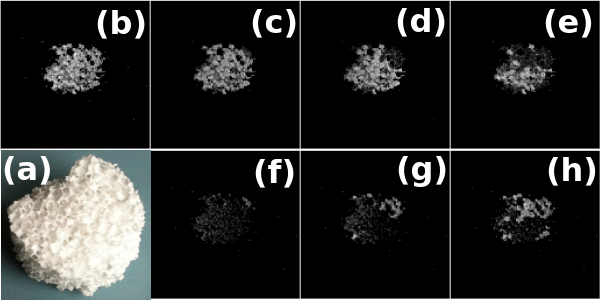Characterizing Macroscopic Mass Transport in Porous Media by Zero Echo Time MRI
- University of Bremen, Faculty 02 (Biology/Chemistry), In-vivo-MR Group, Bremen, Germany
MRI can non-destructively characterize macroscopic mass transport in porous media by widely utilized RF refocusing and/or pure phase encoding methods, resulting in MR signals which are immune to off-resonance effects. However, in RF refocusing methods, the T2-weighted contrast may be large and even evolve during the experiment, leading to systematic errors in some studies. In pure phase encoding methods, inefficient acquisition in k-space limits the temporal resolution, which is particularly important if high spatial resolution in three orientations is required.
Zero Echo Time (ZTE) MRI is a fast and robust 3D imaging method, which has been shown to have great potential in biomedical studies [1][2][3]. In ZTE MRI, gradients are already switched on before the RF excitation and the subsequent radial center-out acquisition. Using a short RF pulse (typically 2 - 20 Ás) with a small flip angle (< 10░) makes slice selection effect negligible. Since a short TR (< 10 ms) is possible, ZTE MRI can yield high spatial resolution without sacrificing the temporal resolution. The effective TE (= half of the RF pulse duration + transmit/receiver switching time + signal build-up delay of the digital filter) can be very short (< 20 Ás). Therefore, the T2*-weighted contrast and image artifacts can be minimized and the MR signals are insensitive to off-resonance effects.
In this contribution, we present the potential of ZTE MRI for characterizing macroscopic mass transport in porous media, which to our knowledge has not been published before, by demonstrating its application for monitoring drying process in ceramic foam. An in situ ZTE MRI scan series (matrix size 1283, voxel size 195 Ám, effective TE 6 Ás, scan time 8.5 min) was performed on a 7T MRI scanner (Bruker BioSpec 70/20 USR). The utilized 38mm RF coil (Doty Scientific) is optimized by using proton-free materials during manufacturing. Fig. 1 shows the photo of a proton-free ceramic foam (a), examples of ZTE MR images of adsorbed water in it (b-e), and corresponding images of evaporated water (f-h) by subtracting the subsequent ZTE MR images (c-e) from the first one (b), respectively. The observed total drying time is approximately 10 hr. High spatial resolution ZTE MRI with promising temporal resolution will open a new door for studies of macroscopic mass transport in porous media.
This work was supported by DFG within Graduate School MIMENIMA (GRK 1860).

